DeepSeek & Dify Integration Guide: Building AI Applications with Multi-Turn Reasoning
Overview
As an open-source generative AI application development platform, Dify empowers developers to build smarter AI applications leveraging DeepSeek LLMs. The Dify platform delivers these key development experiences:
Visual Development - Create DeepSeek R1-powered AI applications in 3 minutes through intuitive visual orchestration
Knowledge Base Augmentation - Activate RAG capabilities by connecting internal documents to build precision Q&A systems
Workflow Expansion - Implement complex business logic via drag-and-drop functional nodes and third-party tool plugins
Data Insights – Comes with built-in metrics on total conversations, user engagement, and more, and supports integration with specialized monitoring platforms. ...
This guide details DeepSeek API integration with Dify to achieve two core implementations:
Intelligent Chatbot Development - Directly harness DeepSeek R1's chain-of-thought reasoning capabilities
Knowledge-Enhanced Application Construction - Enable accurate information retrieval and generation through private knowledge bases
For compliance-sensitive industries like finance and legal, Dify offers Private Deployment of DeepSeek + Dify: Build Your Own AI Assistant:
Synchronized deployment of DeepSeek models and Dify platform in private networks
Full data sovereignty assurance
The Dify × DeepSeek integration enables developers to bypass infrastructure complexities and directly advance to scenario-based AI implementation, accelerating the transformation of LLM technology into operational productivity.
Prerequisites
1. Obtain DeepSeek API Key
Visit the DeepSeek API Platform and follow the instructions to request an API Key.
If the link is inaccessible, consider deploying DeepSeek locally. See the local deployment guide for more details.
2. Register on Dify
Dify is a platform that helps you quickly build generative AI applications. By integrating DeepSeek’s API, you can easily create a functional DeepSeek-powered AI app.
Integration Steps
1. Connect DeepSeek to Dify
Go to the Dify platform and navigate to Profile → Settings → Model Providers. Locate DeepSeek, paste the API Key obtained earlier, and click Save. Once validated, you will see a success message.
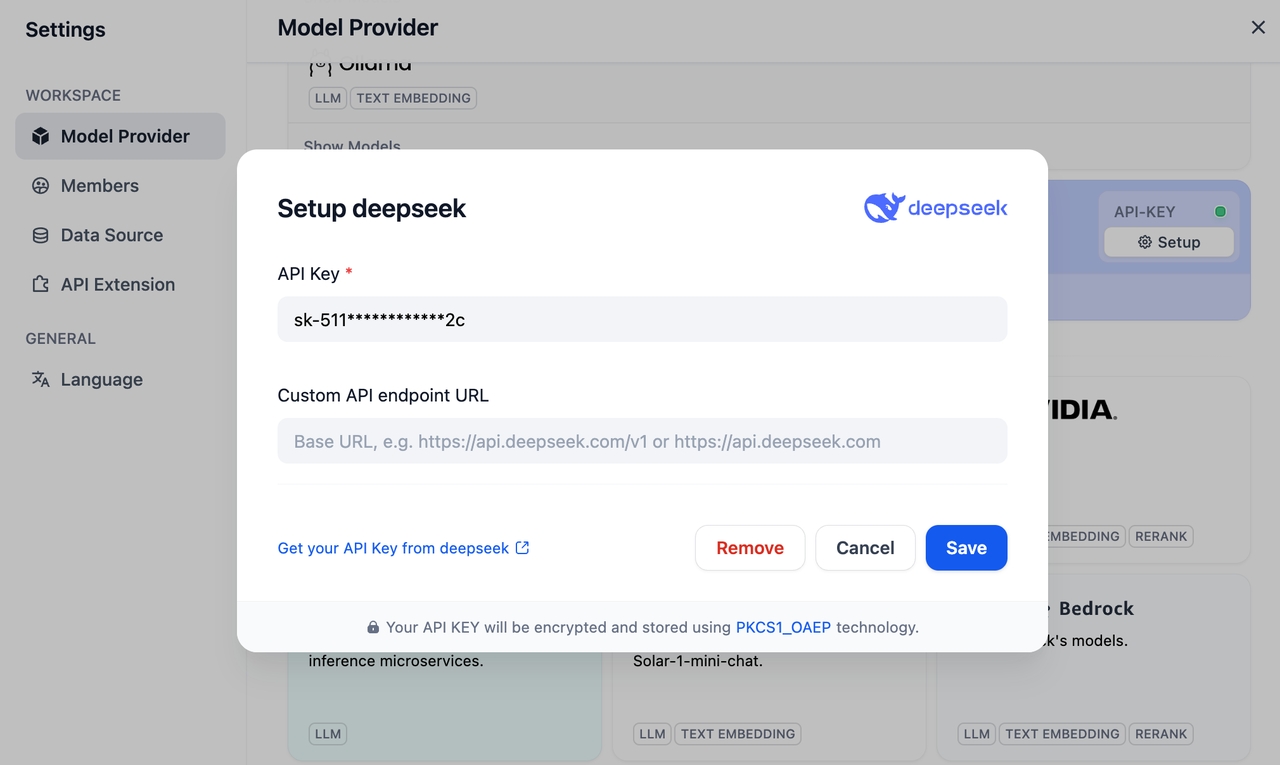
2. Create a DeepSeek AI Application
On the Dify homepage, click Create Blank App on the left sidebar and select Chatbot. Give it a simple name.
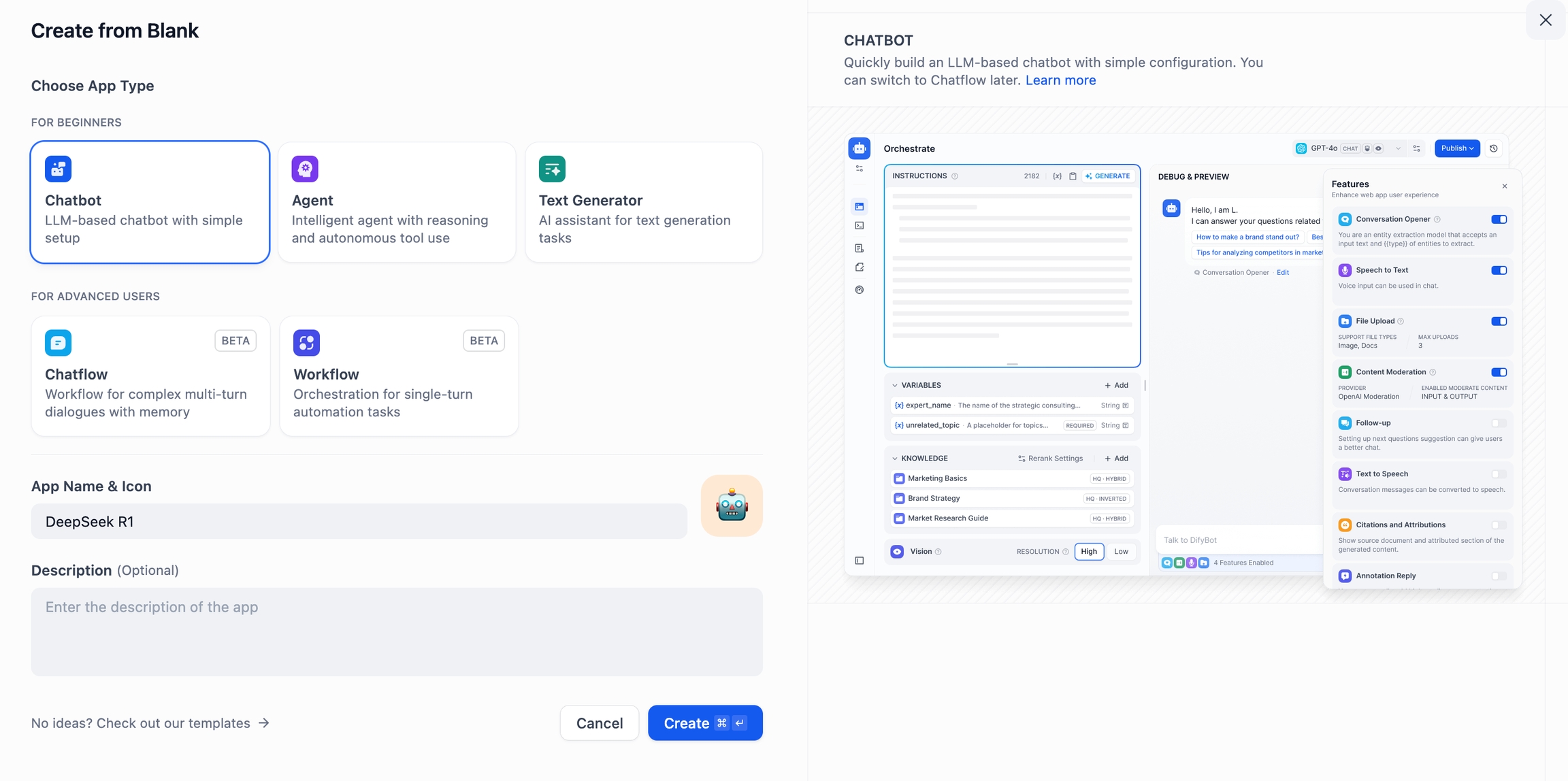
Choose the
deepseek-reasonermodel.
The deepseek-reasoner model is also known as the deepseek-r1 model.

Once configured, you can start interacting with the chatbot.
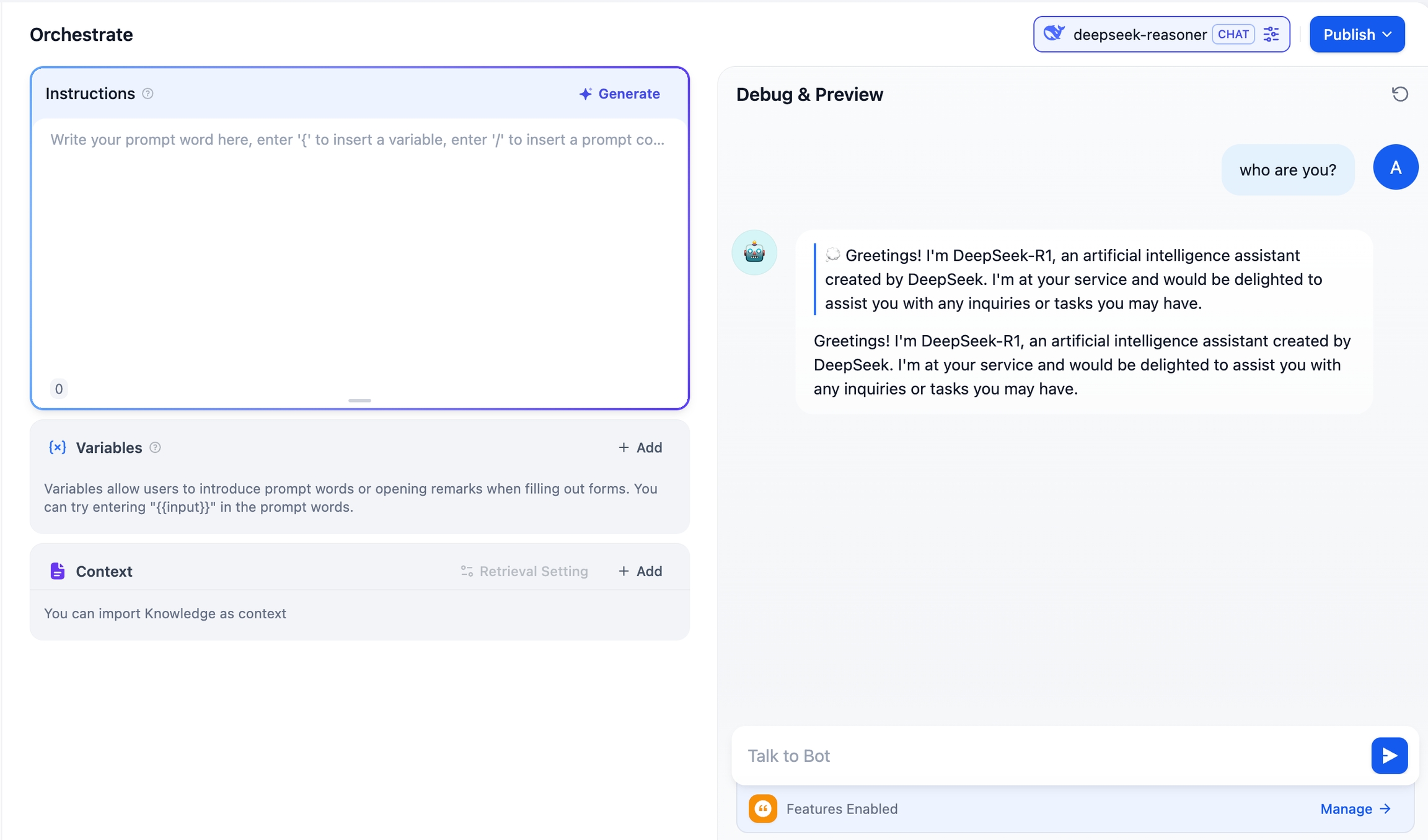
3. Enable Text Analysis with Knowledge Base
Retrieval-Augmented Generation (RAG) is an advanced technique that enhances AI responses by retrieving relevant knowledge. By providing the model with necessary contextual information, it improves response accuracy and relevance. When you upload internal documents or domain-specific materials, the AI can generate more informed answers based on this knowledge.
3.1 Create a Knowledge Base
Upload documents containing information you want the AI to analyze. To ensure DeepSeek accurately understands document content, it is recommended to use the Parent-Child Segmentation mode. This preserves document hierarchy and context. See Create a Knowledge Base for detailed steps.
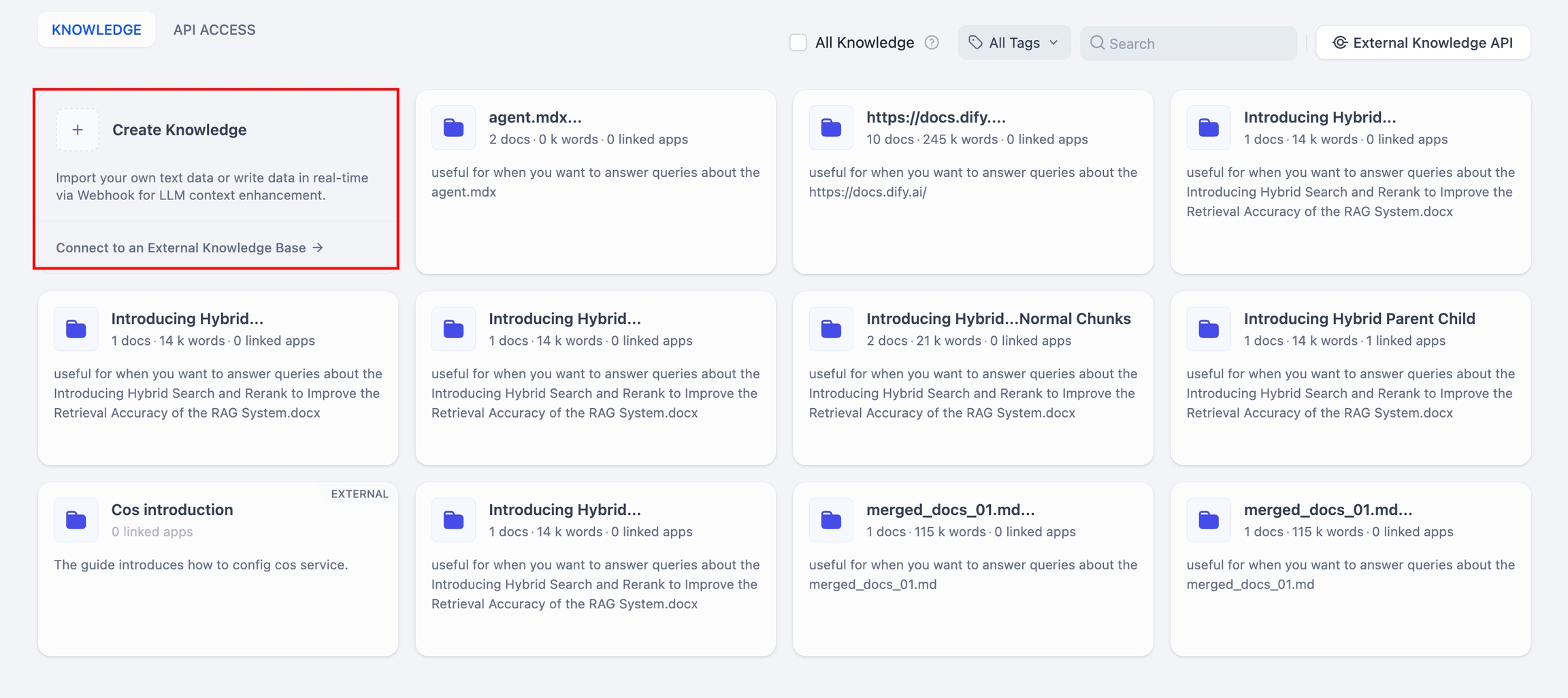
3.2 Integrate the Knowledge Base into the AI App
In the AI app's Context settings, add the knowledge base. When users ask questions, the LLM will first retrieve relevant information from the knowledge base before generating a response.
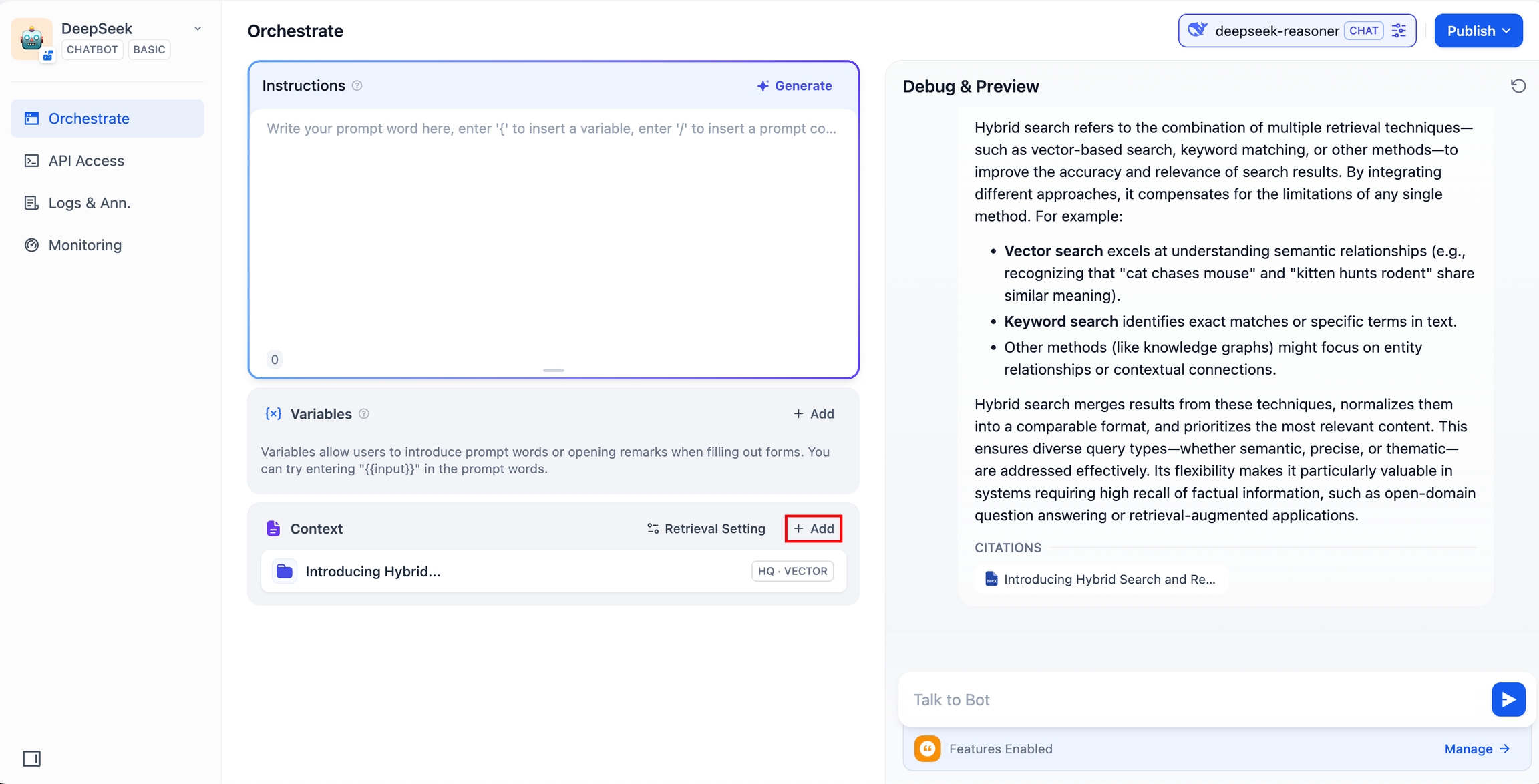
4. Share the AI Application
Once built, you can share the AI application with others or integrate it into other websites.
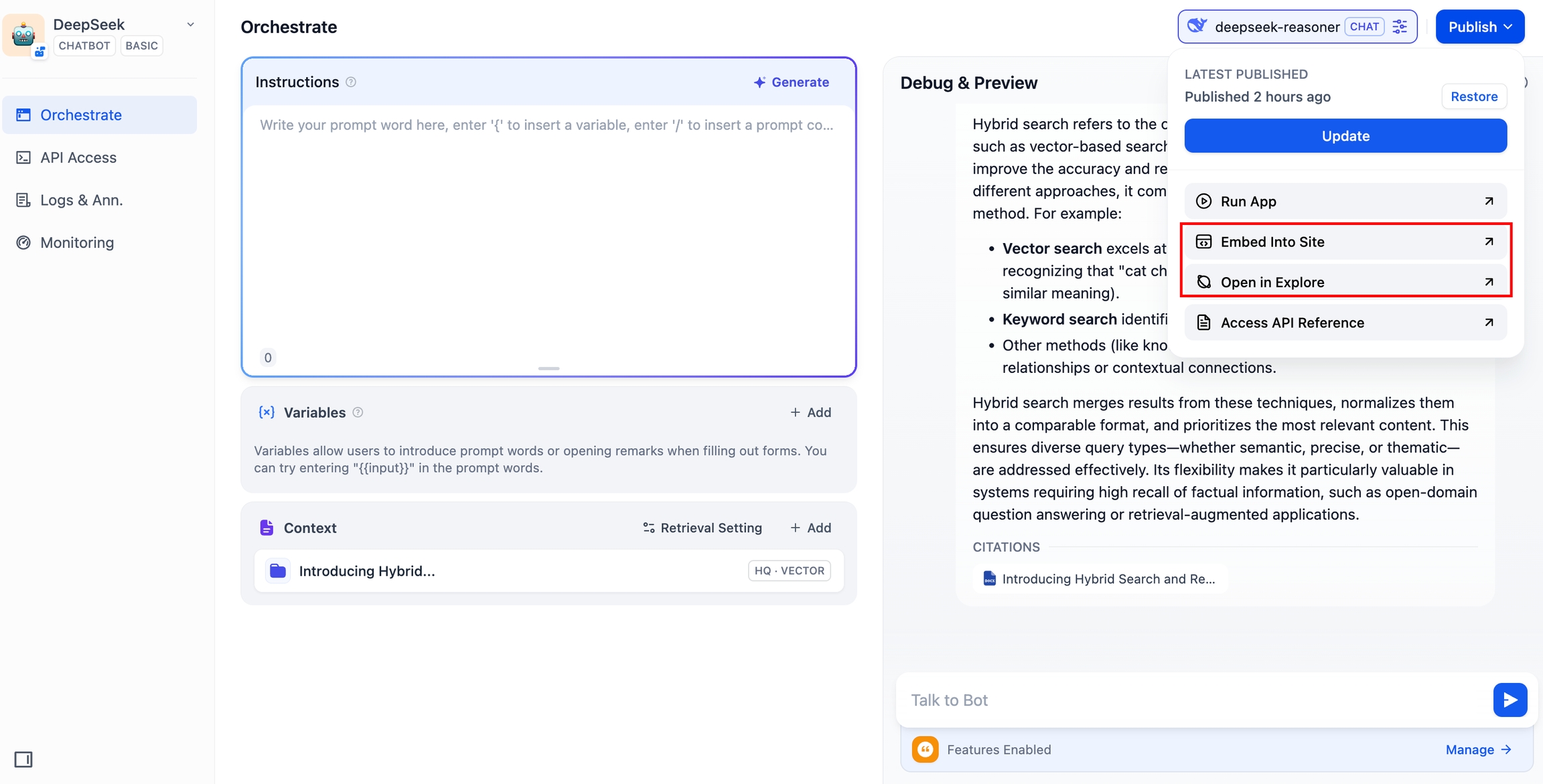
Further Reading
Beyond simple chatbot applications, you can also use Chatflow or Workflow to build more complex AI solutions with capabilities like document recognition, image processing, and speech recognition. See the following resources for more details:
Last updated